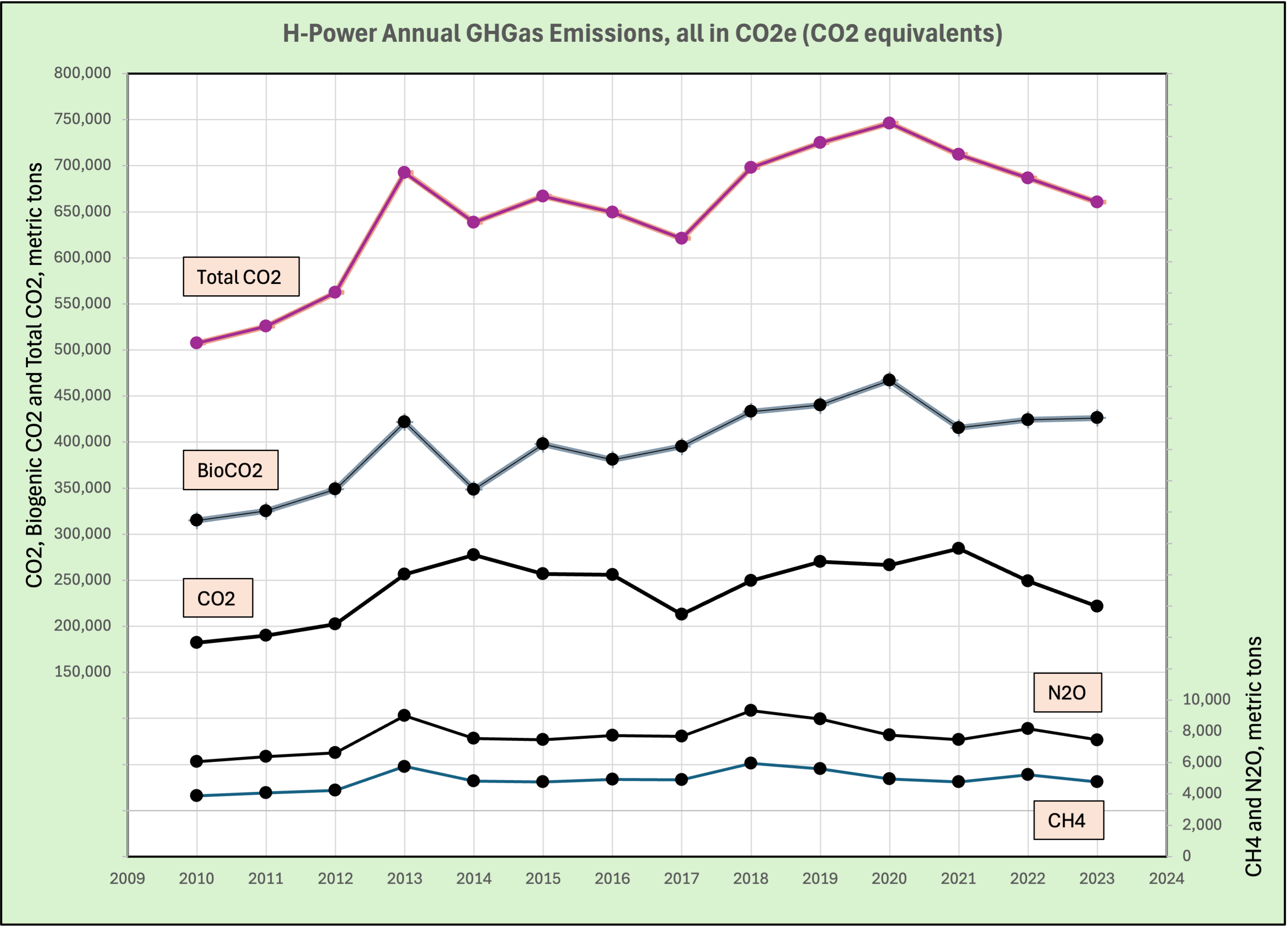
These CO2 equivalent values are from the EPA. The EPA derived them from information provided by Covanta/Reworld, the operator of the City & County’s H-Power Incinerator at Kapolei, Oahu. H-Power processes a large majority of Oahu’s garbage (MSW) to provide about 7% of Hawaii’s electricity.
Three of the charted values were measured; CH4, N2O and Total CO2. The Biogenic CO2 values were calculated separately as that carbon was deemed more recently drawn out of the atmosphere, compared to fossil fuel carbon. Regardless of its date of origin, H-Power’s current “Total CO2” emissions still increase current atmospheric CO2 content. (Biogenic CO2 is included in the EPA website content and in the graph above, but not in the EPA website graph.)
Below is the “Resource/waste” section of the latest statewide Energy Flowchart. Note the “energy wasted” percentage in the last column.
Details on the terminology, copied from the flowchart’s website, are in italics following the chart. Increasing your computer’s image size may be useful.

Descriptions of Resources, Products, End Use Sectors, and Efficiency status
The flowchart consists of four levels, appearing as the four columns seen in the flowchart: resource, product, end use sector, and efficiency.
At each of these levels, energy flows are directed into categories.
For detailed descriptions of each resource, product, end use sector, and efficiency status, refer to the documentation included at the end of the webpage.
Efficiency –
Inspired by the Energy Flow Charts published by Lawrence Livermore National Laboratory (LLNL), the last column in the flowchart is an estimation of energy used to perform intended tasks (i.e., useful mechanical work). This distinction indicates the level of energy waste in the entire energy system and represents an estimation for the total efficiency of the energy system.
Energy used largely represents useful mechanical work (i.e., the accomplishment of an intended task resulting from energy consumption).
Energy wasted largely represents the energy consumed for the production of such mechanical work that is lost to the environment (usually in the form of heat).
The more energy efficient an energy system is, the more useful work is generated by that energy system. Thus, the larger the energy used category will be relative to energy wasted.
Conversely, the less energy efficient an energy system is, the less useful work is generated by that energy system. As a result, the larger the energy wasted category will be relative to energy used.
INaction is the enemy
Is there a technology which avoids these wasteful and unnecessary CO2 emissions? Fortunately yes, a recent one. Modern carbonization pyrolysis produces very little CO2 as a byproduct. In the above graph the annual ~700,000 metric tons of CO2 emissions would be eliminated. Carbon from the pyrolyzed waste would not be released into the atmosphere as CO2 but instead converted to reusable biochar for sequestration. Thus removing that carbon from the atmosphere for centuries.
An increasing number of uses are being found for nontoxic biochar to meet the imperative of carbon sequestration. Productive applications include soil amendments to increase farm productivity, filter medium in stormwater mitigation, fill for concrete or synthetic building material, etc. These re-uses all to the benefit of local communities.
Switching MSW processing from incineration to pyrolytic biochar production can begin incrementally. Biochar facilities should be built in a distributed pattern throughout the island, ideally near current MSW transfer stations. Such proximity to biomass sources and biochar usage allows reduction in the current transit pollution of hauling ~2,500 tons of MSW to Kapolei each day.
Pyrolytic carbonization of MSW re-uses and sequesters carbon rather than releasing it into the atmosphere as CO2. By good fortune, there are even more far-ranging community advantages for Hawaii.
